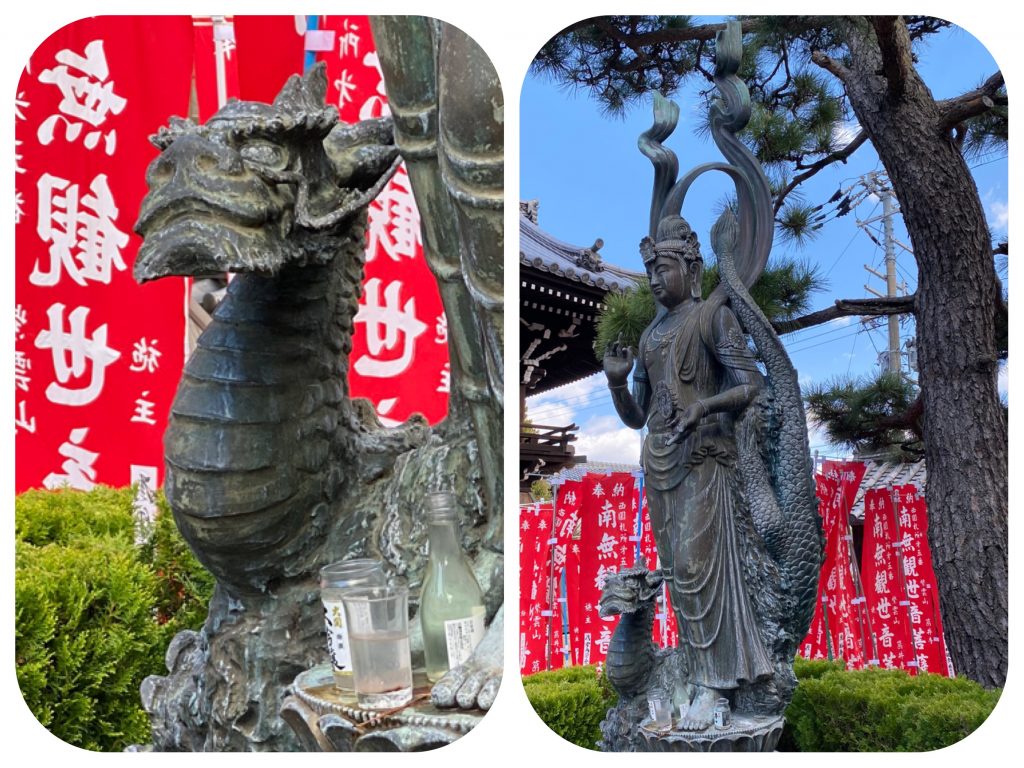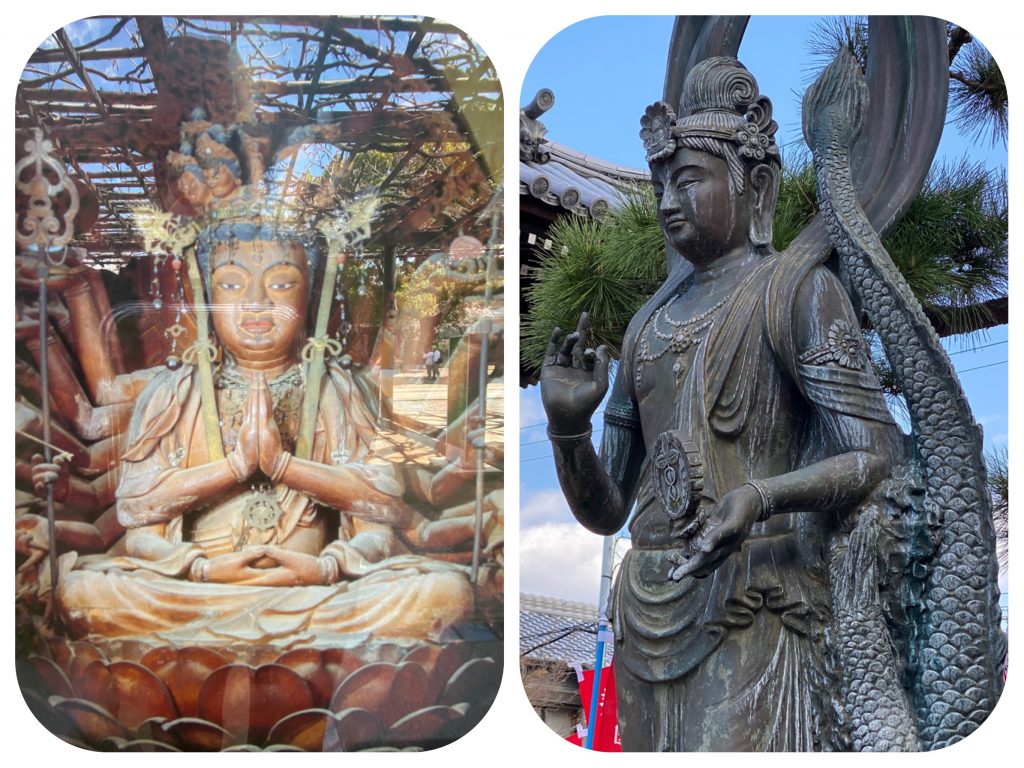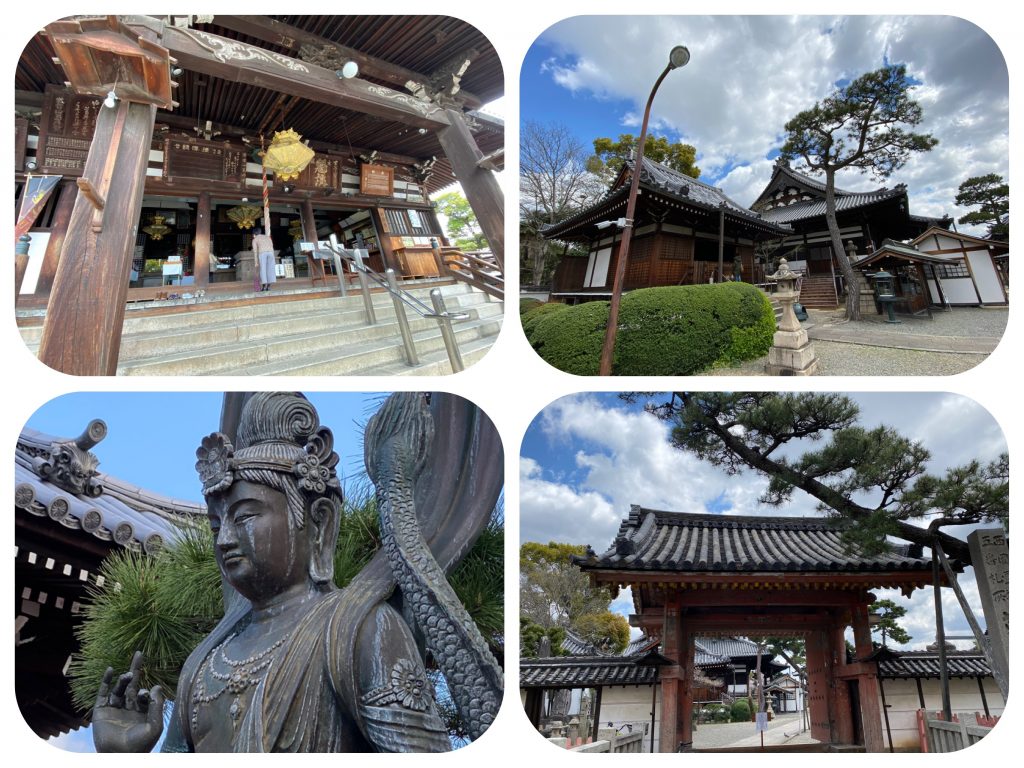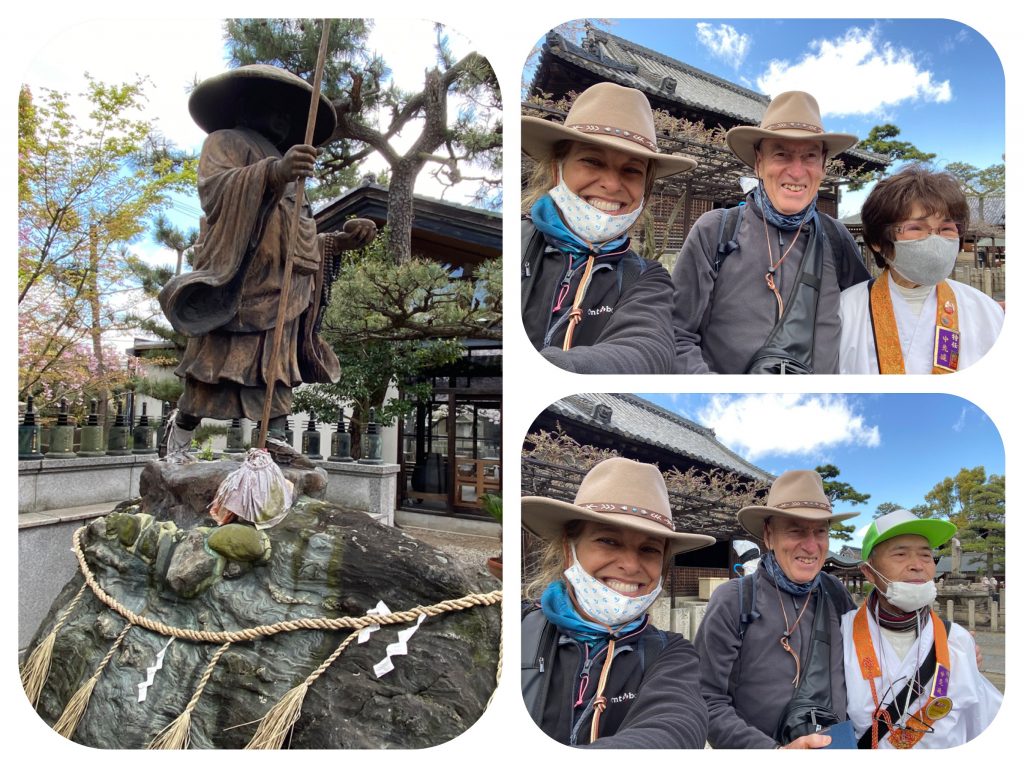Day 19 - The Road To Enlightenment - Walking The Saigoku Kannon Pilgrimage - From Izumi To Fujii-dera, Temple #5, Japan















Day 19 - The Road To Enlightenment - Walking The Saigoku Kannon Pilgrimage - From Izumi To Fujii-dera, Temple #5, Japan
After our experience yesterday, when we climbed up a steep path to a remote mountain temple, only to find it closed because of the coronavirus, we decided to ask the front desk of our hotel to call Fujii-dera temple to see if it was open, before we embarked on the walk there.
We have decided to walk to all the Saigoku temples, even if we can’t get our pilgrimage book and scroll stamped.
But if we cannot get them stamped, there would be no need to carry them with us on the days we walk only with our day packs.
The sweet mannered ladies at the front desk had never heard of a Go-Shuin stamp, but they called the temple for us and were told that the temple was open and they were giving stamps.
The only requirement they had, since it is an urban temple, was that visitors wear a face mask when they visit the temple.
We told the front desk that we did not have masks, and that it was impossible to buy them anywhere.
They knew all about the lack of masks.
It is all over the news.
They showed the prime minister, Abe, wearing a handmade face mask.
One of the front desk ladies looked at us with compassion.
She ran to the back office and came back with a small bag of cloth face masks that she had made by hand, and generously offered us to choose one each.
We were so touched by her kindness.
I offered to pay her for the masks, but she adamantly refused.
We thanked her, packed our day packs and made our way to the temple.
Instead of walking forwards from our hotel to Fujii-dera temple, we decided to walk the day’s route backwards, so as to make sure that we would get there before they closed.
Fujii-dera Temple is an administrative temple in the middle of a busy area of small lanes and streets full of shops.
It appeared that everything was open, and the streets were busy.
The only difference now was that most people were wearing masks on public transportation.
The kind monk at the temple’s office asked me what happened to stamp number four on our scroll, where Sefukuji Temple’s stamp should have been.
I explained that we had walked all the way up the mountain yesterday, but the temple was closed.
He expressed his sympathy to us.
This coronavirus is a real bummer, he said.
Fujii-dera (葛井寺) is a Shingon Buddhist temple.
The main image enshrined here is a sculpture of the Thousand-armed Kannon.
The temple was founded by order of Emperor Shōmu in the year 725, and consecrated by the monk Gyōki.
It later became a provincial government temple (Kokubun-ji) with the purpose of providing prayers and other services for the protection of the nation and the Imperial House.
The temple was destroyed by earthquake in 1510 and renovated in 1602 by Toyotomi Hideyori.
The four entrance gates of the temple date from this time.
The present main hall was rebuilt in 1776.
The main image of a seated thousand-armed and eleven-headed Kannon was made using a dry lacquer technology, and is designated a National Treasure of Japan.
Unlike other Kannon statues which are called thousand-armed Kannons, but only have about a few dozen at most, this statue actually has a total of 1041 arms.
There are two main arms with the palms facing each other in front of the statue, 38 large hands and 1001 small arms extending from behind the body.
The statue can be seen only on specific annual dates.
We met another couple of pilgrims at the temple.
We recognized that they were pilgrims, by their white pilgrimage jackets and the Buddhist stoles around their necks.
They seemed to want to talk to us, so I smiled at them and they approached us.
One of the things I have noticed when everyone is wearing a face mask, is that warm gestures like a person’s smile are completely hidden.
Since we were already in the garden on our way out of the temple, I took off my mask and they could see my smile.
They complimented the way we chanted the Buddha’s Heart Sutra.
On this pilgrimage, so many people have complimented us on our excellent chanting, and I felt good about having us practice and memorize it every time we drove to the ski slopes this winter.
For forty minutes each way, in the morning on our way to ski and upon our return home, we memorized the Lotus Sutra in the car.
Then they told us that they had just finished their Saigoku pilgrimage.
This was their last temple.
They unrolled their scroll to show us all the calligraphy stamps they had collected.
We congratulated them on their accomplishment, and they seemed happy.
Although they told us that they visited the temples by car, we still knew that many temples are on top of mountains and require climbing many hundreds of stairs or steep forest paths from the parking lots.
Near Fujii-dera, there are Keyhole shaped mausoleums of ancient Japanese emperors, which I wanted to visit.
These amazing mausoleums can only be appreciated from the air, where you can see their keyhole shape that is surrounded by a moat of water.
From the ground, all you can see is a lushly forested hill, surrounded by a moat full of water.
Because these are sacred grounds with historical significance, they are all fenced in and no visitors are allowed to walk on them.
After visiting the temple and the Keyhole mausoleums, we started walking back towards our hotel.
The day varied between quite warm and breezy, to full sun to cloudy and cool, when we were in the shade.
We did not know why, but the walk felt terribly heavy.
The road was flat, but the energy of the city was heavy and burdensome.
We felt the fear as an almost thick energy, which we were barely plowing through.
We walked for about three hours, then took a short break for lunch in a garden cafe that served herbal teas and grilled cheese sandwiches.
The cafe was packed with people, yet the young waiter seemed terrified to take our order.
A friendly customer leaned over to translate some of the Kanji characters which I cannot read.
She was so sweet and helpful.
We continued walking, between car dealerships, garages, busy highways, train tracks and neighborhoods.
At times, we passed by city parks full of blooming cherry trees, with people walking around taking pictures.
We hoped to get a hot drink at the Starbucks, but the Starbucks chain in Japan decided to close for the weekends because of the coronavirus.
How they decided that people have less chance of infections during the week is beyond me.
By the closed Starbucks, we met an American man who seemed to want to talk to us.
He saw me looking at my map, and asked if he could help us with directions.
He said that he had lived in the neighborhood for 45 years.
He asked what we were doing.
We explained about our pilgrimage, which he had not heard about.
He asked us if we were walking as a choice, implying that maybe we had no money to use trains, buses or rent a car.
We assured him that we were walking as a choice.
He said he hopes that we will be able to complete our pilgrimage under these conditions.
He told us that even if Japan does declare a state of emergency, they cannot mandate that businesses close down or that people stay indoors.
He had long grey hair, lots of piercings, wore a face mask that did not look so clean, and expressed his concerns about not being able to get any hand sanitizer for two weeks.
Like face masks, they were all sold out.
I did not know what to say to comfort him.
Jules told me that he looked a bit lonely, and was just happy to talk to other foreigners like him.
We wished him a safe and happy life, and went to eat dinner in the Lalaport Mall by our hotel.
We ate an Okonomiyaki dinner, sitting at a table with our own grill in the middle.
It was tasty and the atmosphere was warm and friendly.
That night after our baths, I went to bed early, visualizing a white healing light around the city, then around the whole island of Japan, then expanded it to cover the whole beautiful green and blue earth.
I visualized love holding the vibrations of the planet with peace and calm.
I sent radiating healing light to all people and to all parts of the earth, as I drifted off to sleep.
With love, care and gentleness,
Tali
Daily stats:
Steps walked - 30,372
23 km. walked
Active walking time - 5.5 hours
Total walking time today - 7 hours.
Total walking distance on the Saigoku to date - 375 km
Temple Visited:
Fujiidera Temple, Osaka Prefecture
Temple #5 of the Saigoku pilgrimage
